Basic QC Practices
2025 Great Global QC Survey Results: South and Latin America
In 2025, the Westgard Great Global Survey assessed the state of QC practices. What's happening in Latin and South America? Is it a copy of the US or Europe, or a separate thing of its own?
The 2025 Global QC Survey Results: Latin and South America
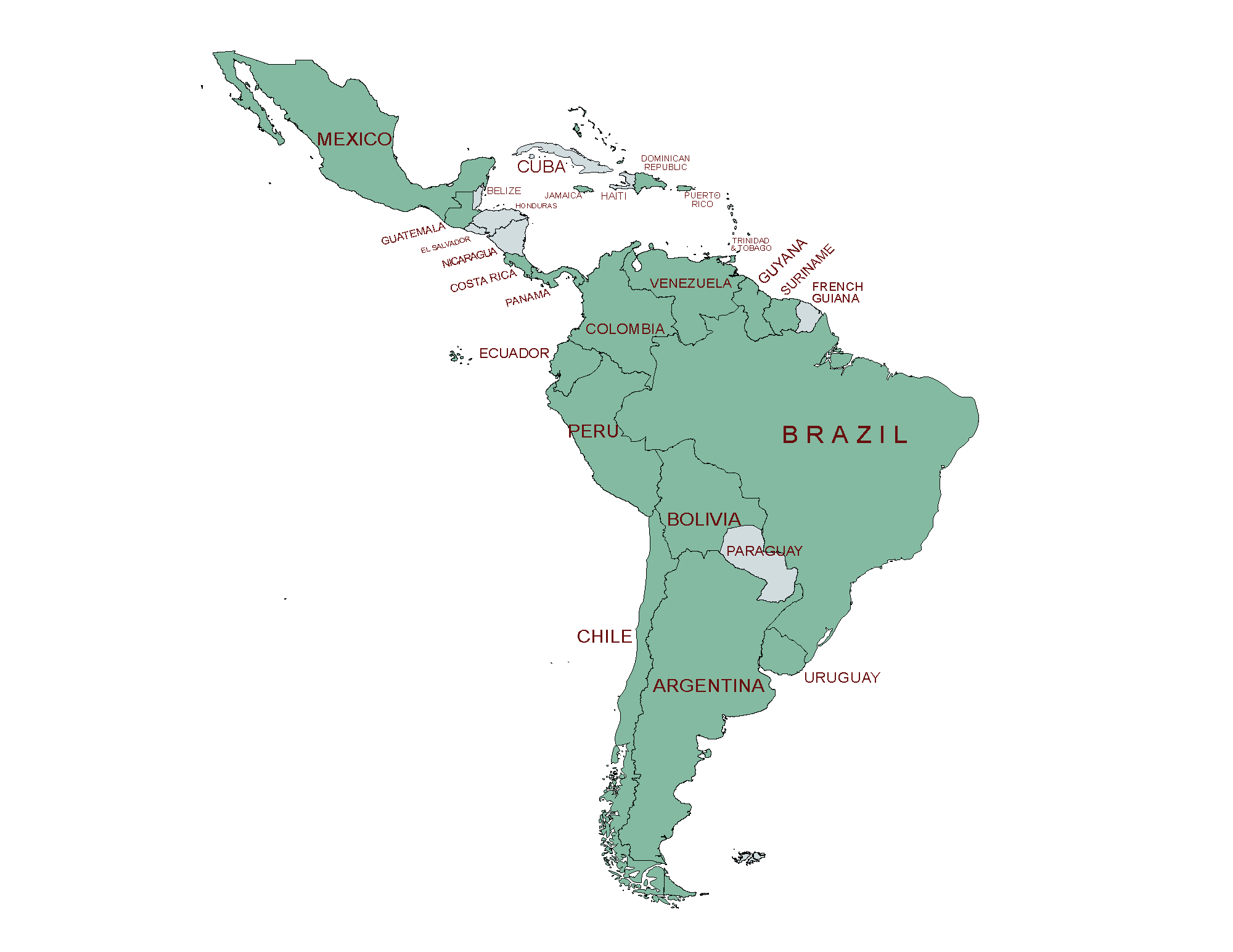
Sten Westgard, MS
September 2025
[This survey was completed with the support and partnership of Thermo Fisher MAS controls.]
In 2025, have QC practices around the world improved or declined?
We surveyed laboratories in 2017 and 2021 about their quality control practices. We did it again in 2025.
We got over 1,280 responses, which break down as follows:
- Africa 118 responses
- Asia 289 responses (note that we include everywhere from India to Australia within this group)
- Europe 143 responses
- Latin and South America 114 responses
- Middle-east 146 responses
- United States and Puerto Rico 440 responses
Asia: 2025 Great Global QC Survey Results: Asia Breakout - Westgard QC
Europe: The 2025 Great Global QC Survey: Europe in isolation - Westgard QC
Middle-East: 2025 Great Global QC Survey Results: Middle East - Westgard QC
Latin and South America: 2025 Great Global QC Survey Results: South and Latin America - Westgard QC
Africa: 2025 Great Global QC Survey Results: Africa - Westgard QC
USA: https://westgard.com/qc-applications/basic-qc-practices/2025-qc-survey-usa.html
All of it together: https://westgard.com/qc-applications/basic-qc-practices/2025-global-qc-survey.html
Latin and South America have a mix of economies, with a mix of influences.
The demographics of the Latin and South American participants
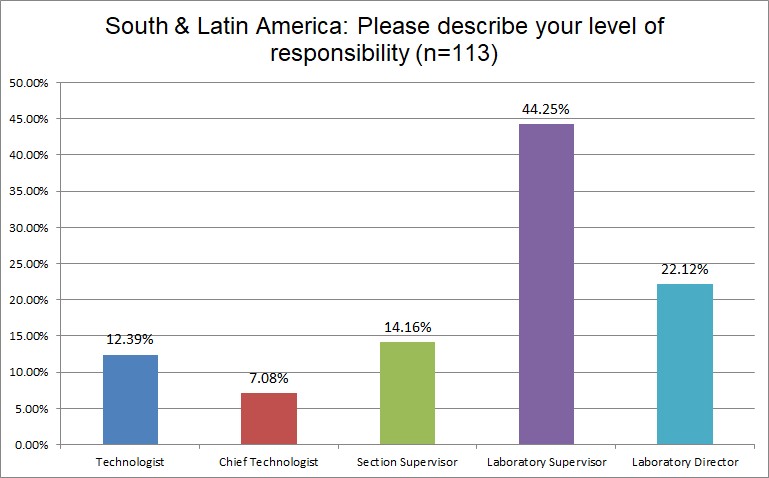
A majority of the responses came from supervisors and directors.
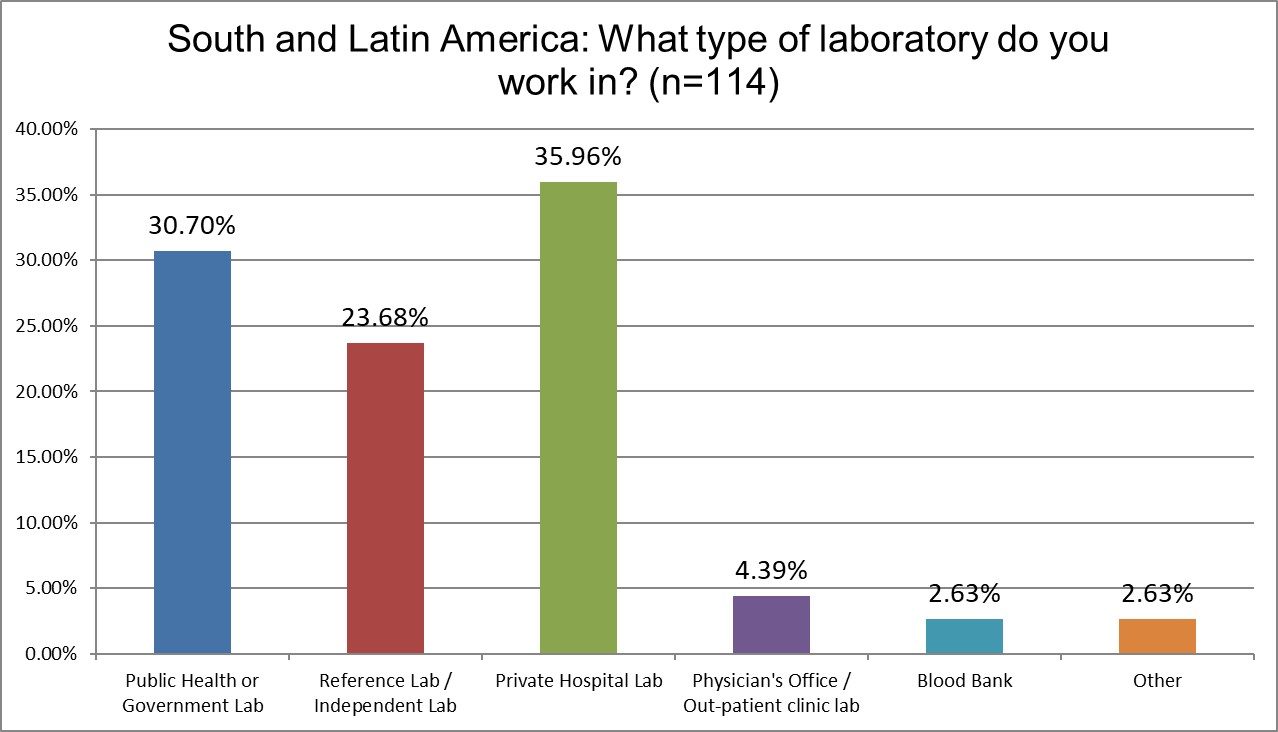
In 2021, over 40% of the respondents were from public labs, and only 27% were from private labs. Those changed significantly in this survey. This time around, the results reflect more of the private laboratory behavior.
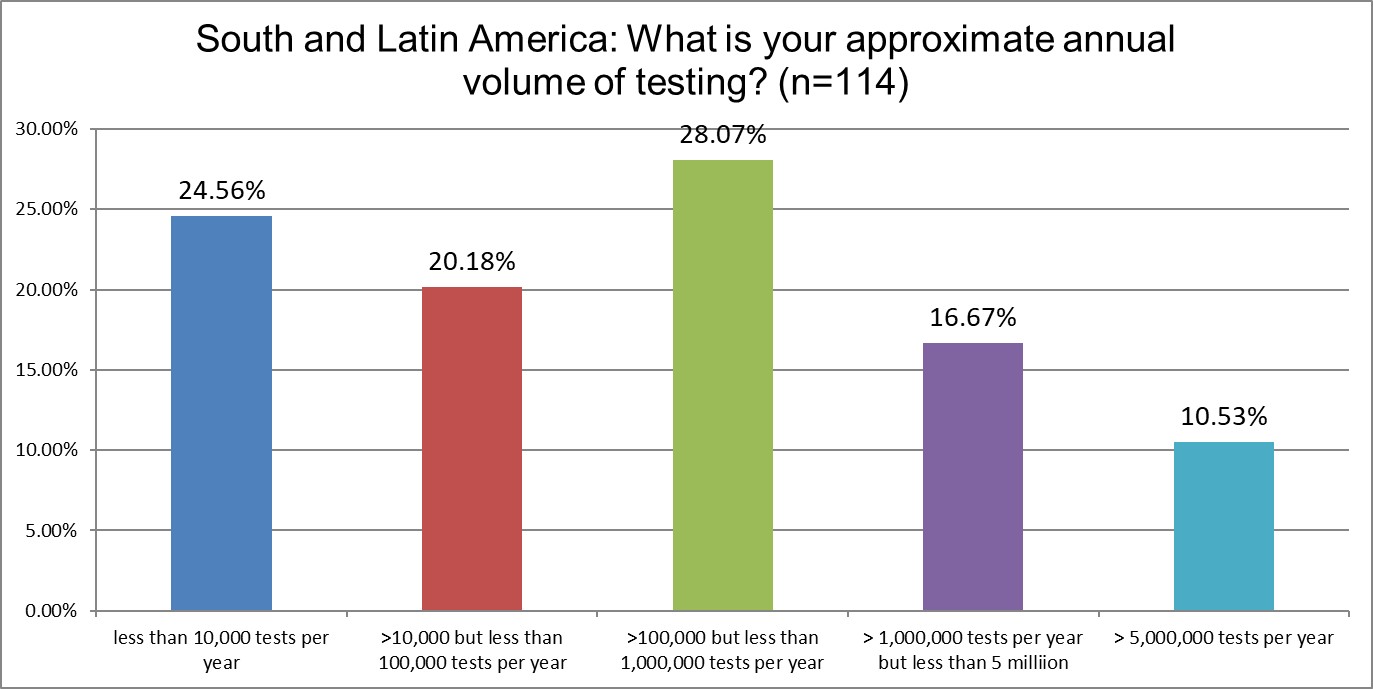
Our Latin and South American respondents increased their representation at both ends of the spectrum. In 2021, 17% of labs were under 10,000 tests. in 2025, 24%. In 2017, 8% of labs fell into the "supermax" category. Now that is over 10%.
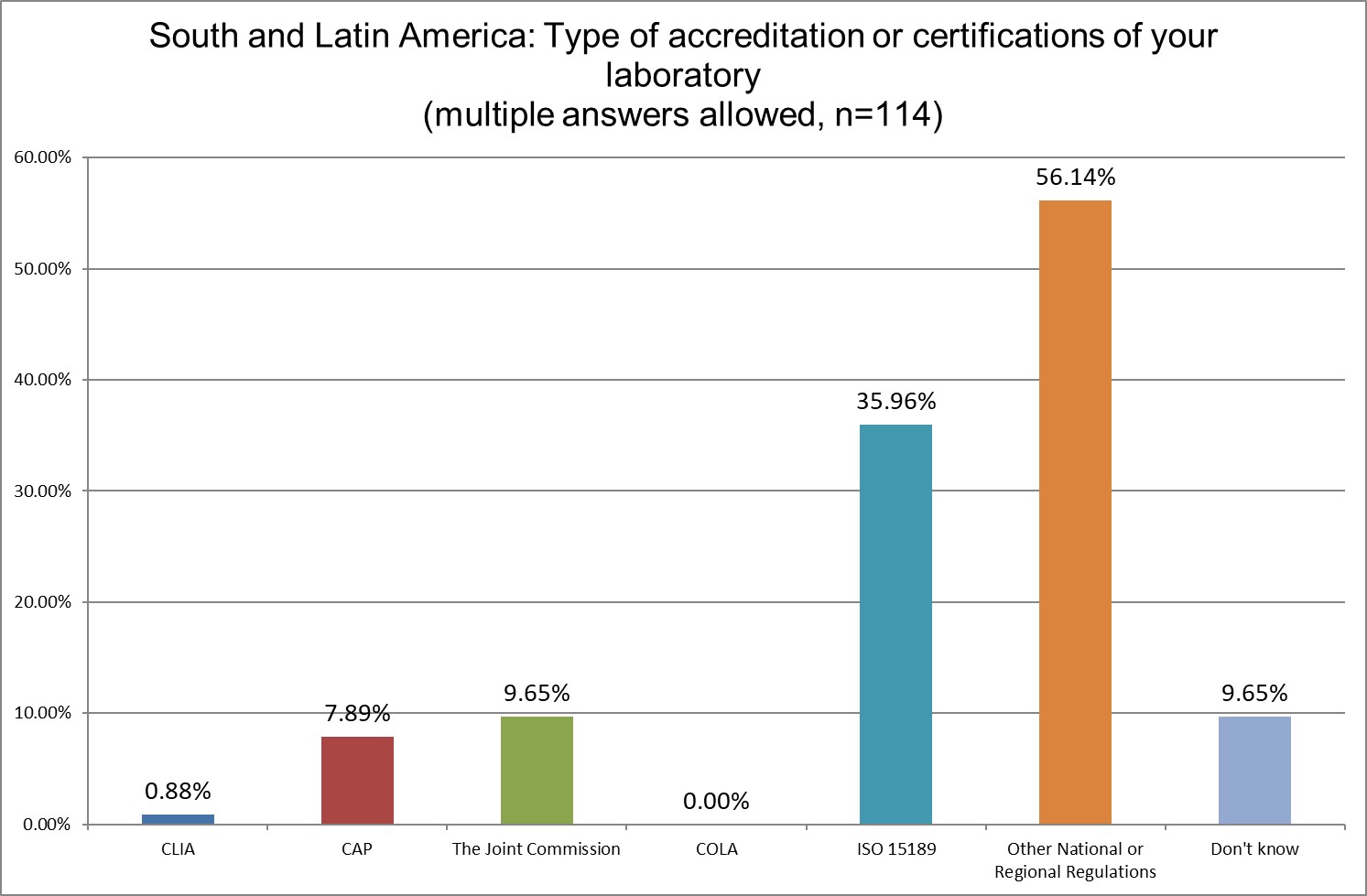
ISO 15189 has made a modest increase in accreditation, growing from 30% of labs in 2021 to 35% in 2025. Reliance on local regulations dominates even more, up from 39% in 2021 to 56% in 2021. CAP accreditation was only 2.74% in 2021 but has more than double to 78.89%. The influence of TJC has similarly increased from 4% in 2021 up to 9.65% in 2025.
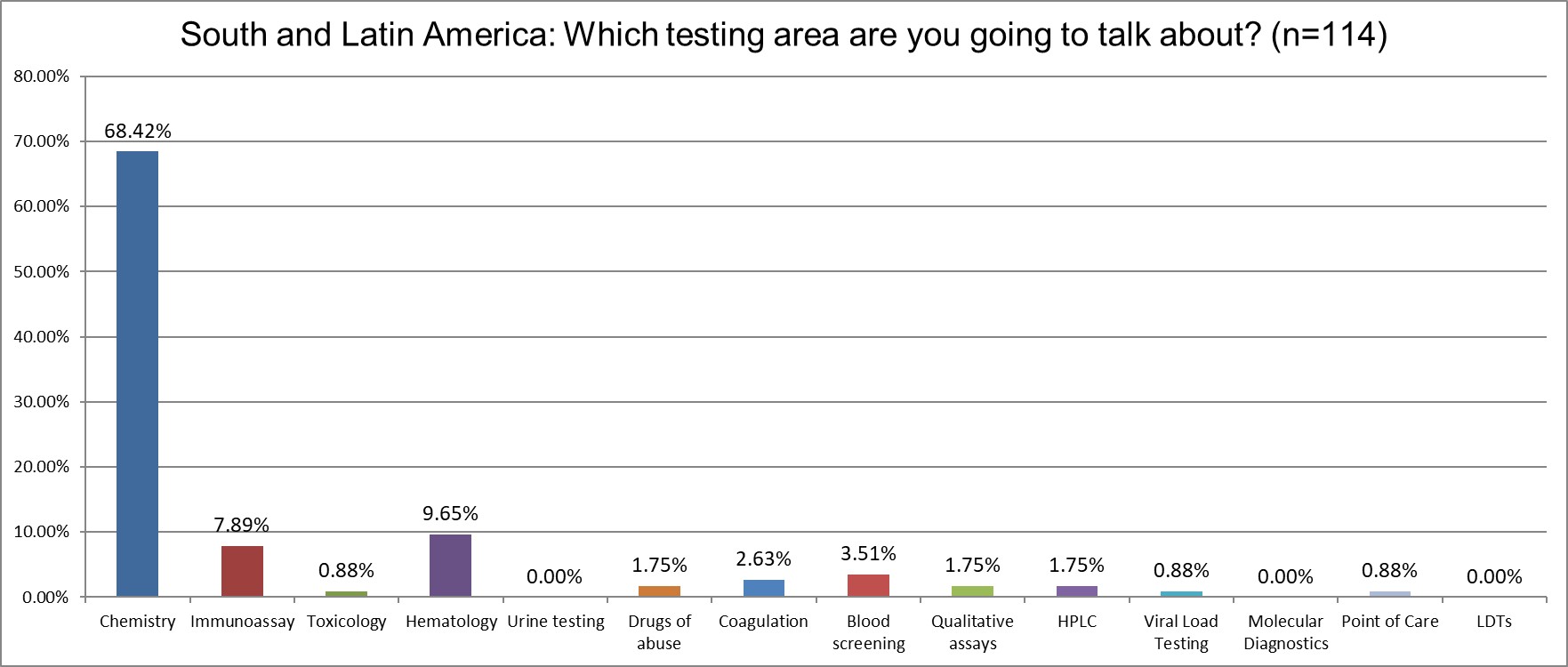
The majority of the survey reponses focus on chemistry testing, increasing from 60% in 2021.
The QC Set Up
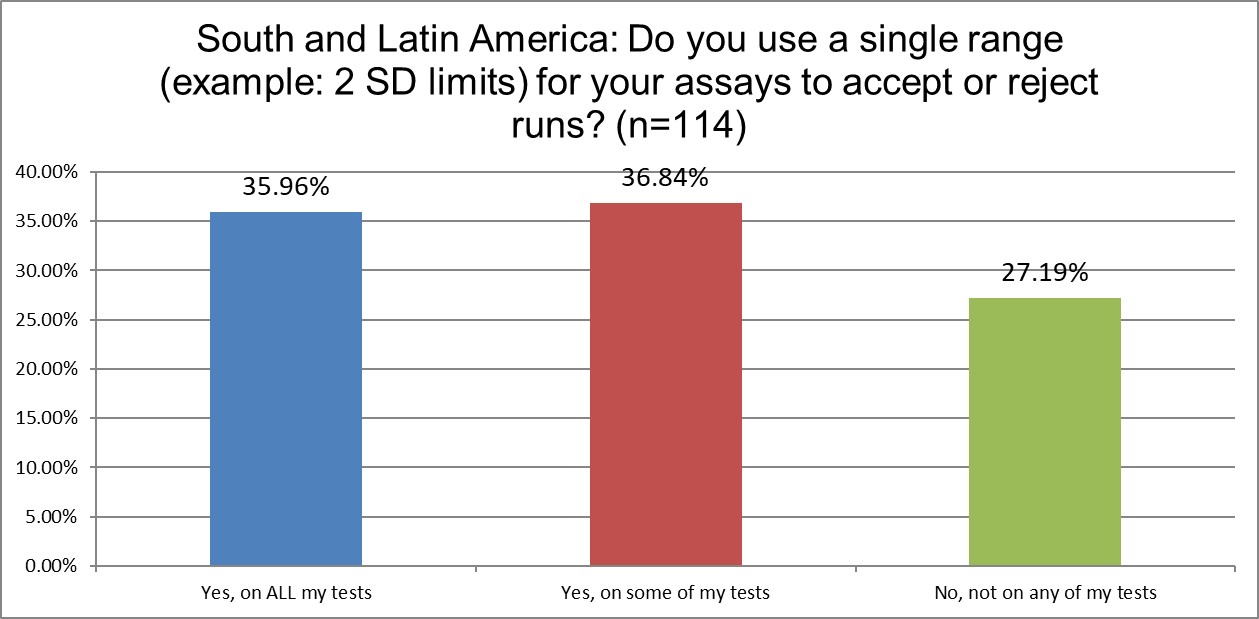
The use of 2 SD on all testing is changing in South and Latin America. In 2021, 48% of labs reported using 2 SD on all their tests. Now that's down to just under 36%. The use of 2 SD on some tests has gone up from 25% in 2021 to just under 37%, so 2 SD hasn't been abolished for good. However, the number of labs that use no 2 SD ranges is still rising, if only slightly, from 25% in 2021 to 27% ni 2025. A quarter of labs in this region not using 2 SD anywhere, that's a global leader!
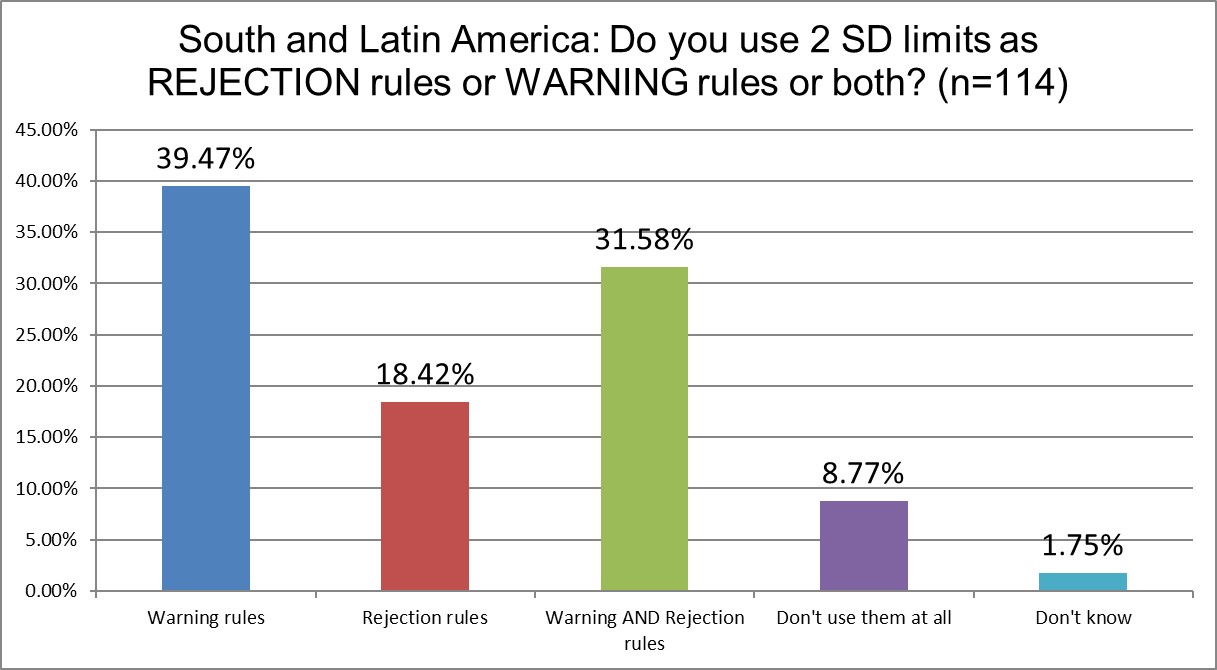
This is a new question we asked for the 2025 survey, so we don't have a prior result to compare it to. Exactly 50% of labs in Latin and South America are using 2 SD for rejection rules or rejection and warning rules. Again, a bad habit from the 1st world not being replicated here. Latin and South America use 2 SD as a warning more often than European labs.
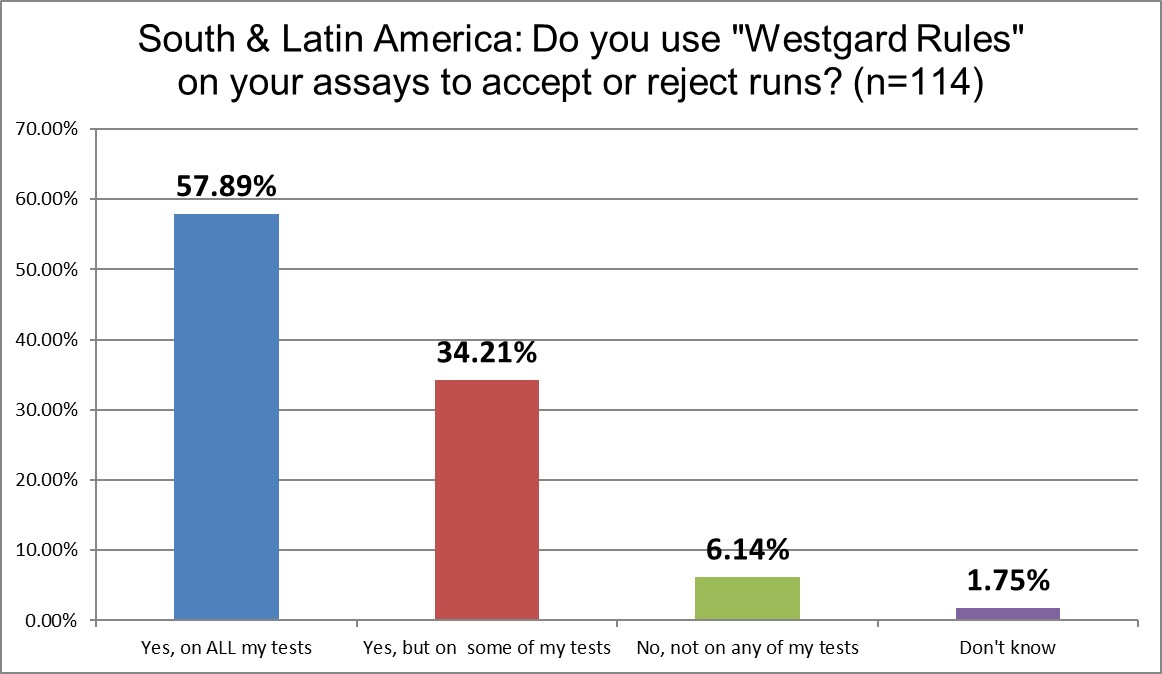
"Westgard Rules" are in use in over 91% of Latin and South American laboratories. This is almost the same as 2021 (90%). However, the type of use has changed significantly. In 2021, 67% of labs used Westgard Rules on all tests. Now that is 57% in 2025. In 2021, 23% of labs used Westgard Rules on some tests. Now that's 34% in 2025. So labs here are becoming more judicious in their use of the rules. This is an appropriate development.
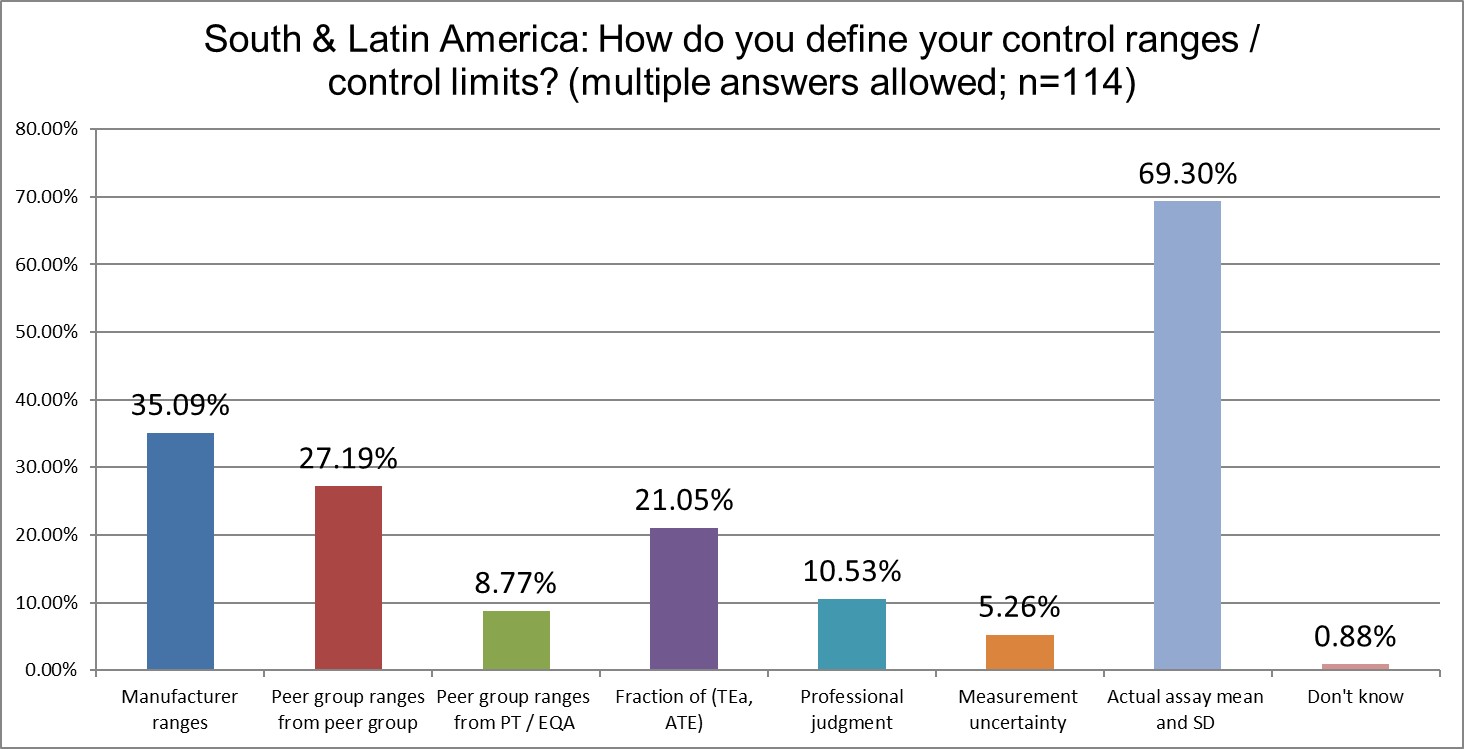
Labs in Latin and South America calculate their own range and SD at a rate of 69%, higher than the 2021 rate of just under 60%. This increase has also been matched by another welcome development, a reduction in the use of manufacturer ranges, from 46% in 2021 down to 35% in 2025. There has been a collapse in the use of measurement uncertainty in defining ranges: 14% in 2021 down to 5% in 2025..
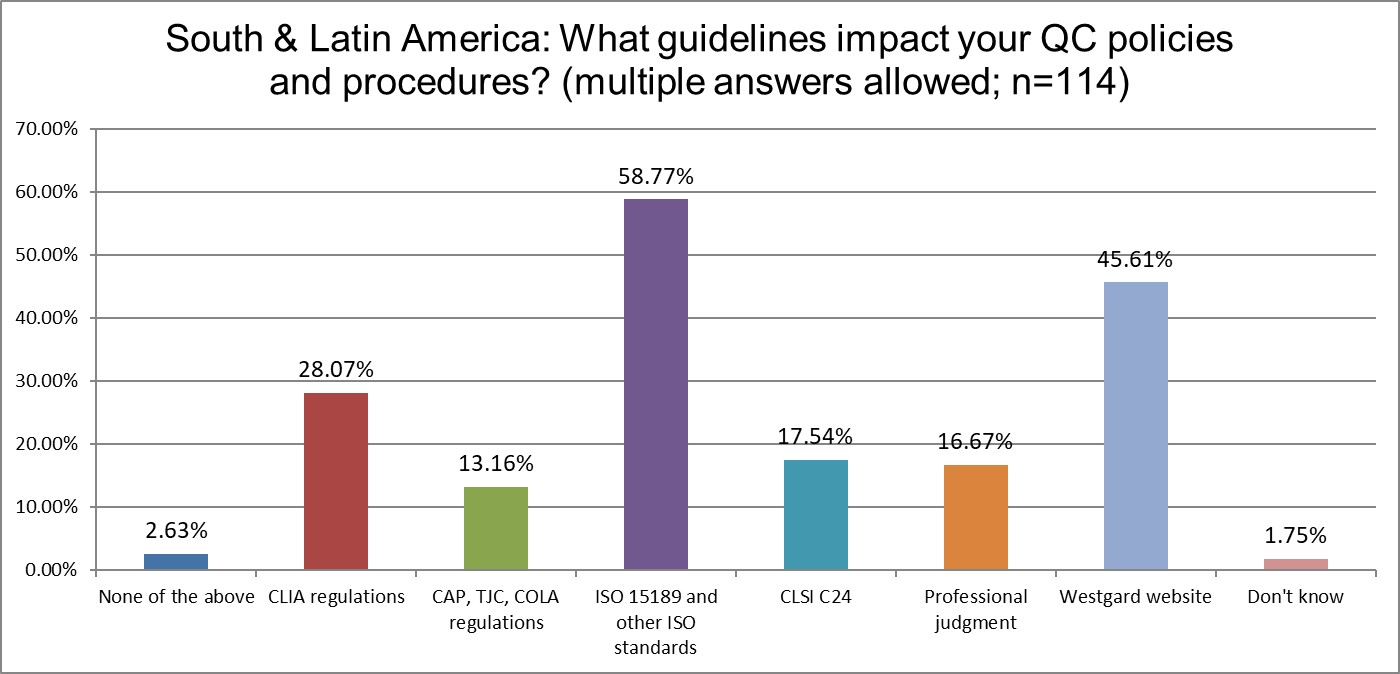
ISO 15189 has a growing influence on how QC is done, from 50% in 2021 to nearly 59% in 2025. The most specific advice on QC, CLSI C24, has remained modestly popular, from 19.6% in 2021 to 17.5% in 2025.
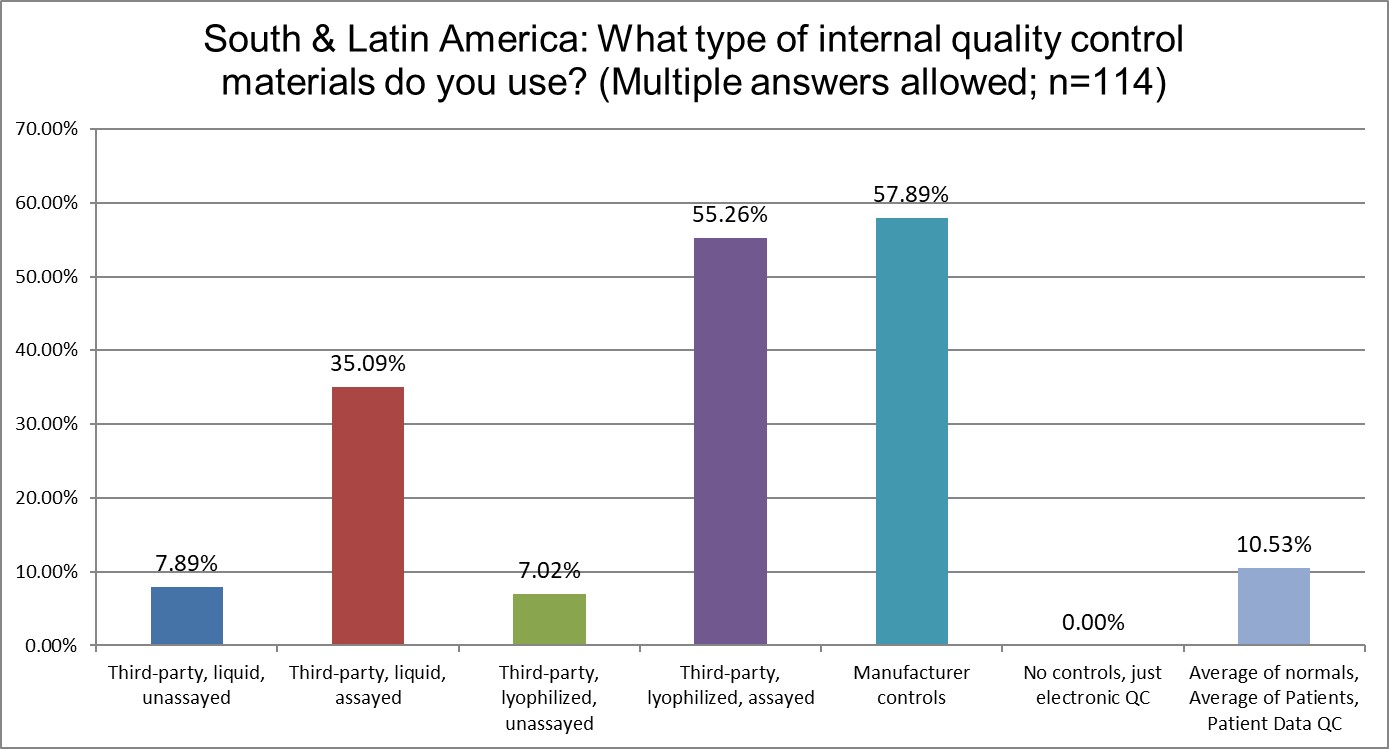
The largest increase in use in Latin and South America comes in the use of 3rd party assayed liquid controls, which jumped from just under 20% in 2021 to over 35% in 2025. 3rd party assayed lyophilized controls also increased significantly, from 41% in 2021 to 55% in 2025. The use of manufacturer controls remains very high and unchanged since 2021. Interestingly, the use of patient data QC actually increased in this region, doubling from 5% in 2021 to over 10% in 2025.
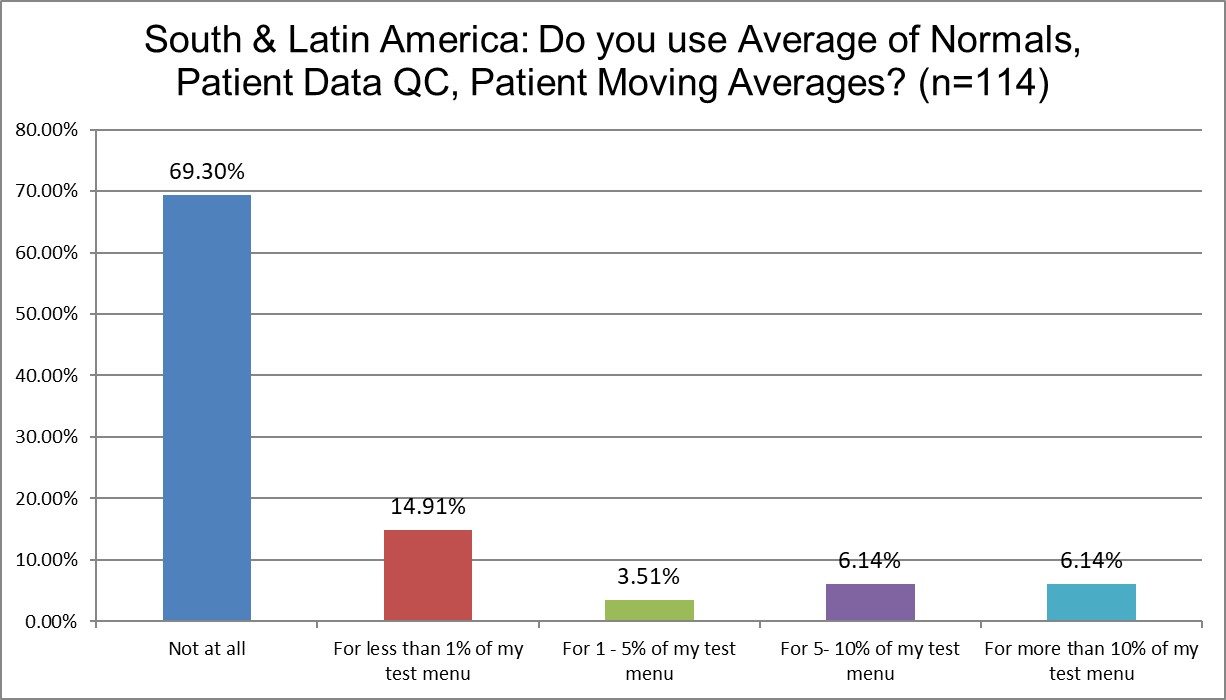
The percentage of labs not using patient data QC has significantly increased from 53% in 2021 to 69% in 2025. In 2021, almost 33% of labs said they used patient data QC for a significant part of their menu. In 2025, that's dramatically dropped to just 6%. As in most parts of the world, patient data techniques are being used on only a tiny minority of tests.
The Real Practice of Running Controls
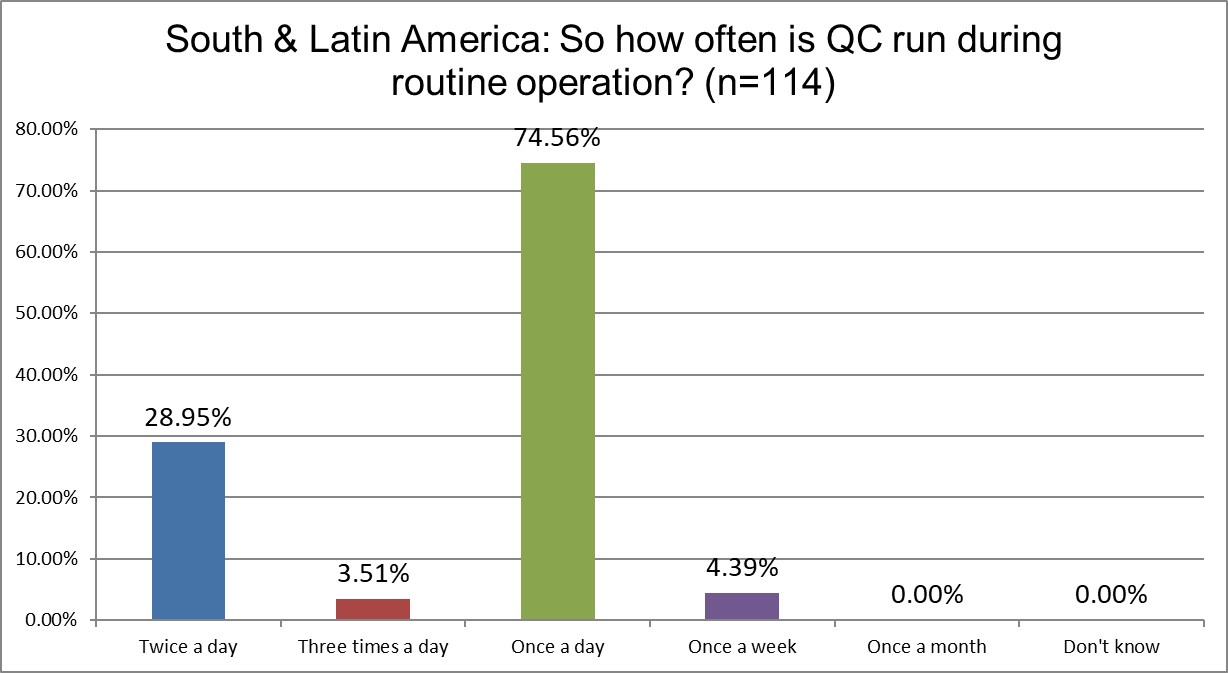
Running three times a day QC significantly decreased from 10% in 2021 to 3.5% in 2025. Running QC once a day increased from 66% up to 74%. Running QC 2x a day also significantly increased from 14% in 2021 to 28% in 2025.
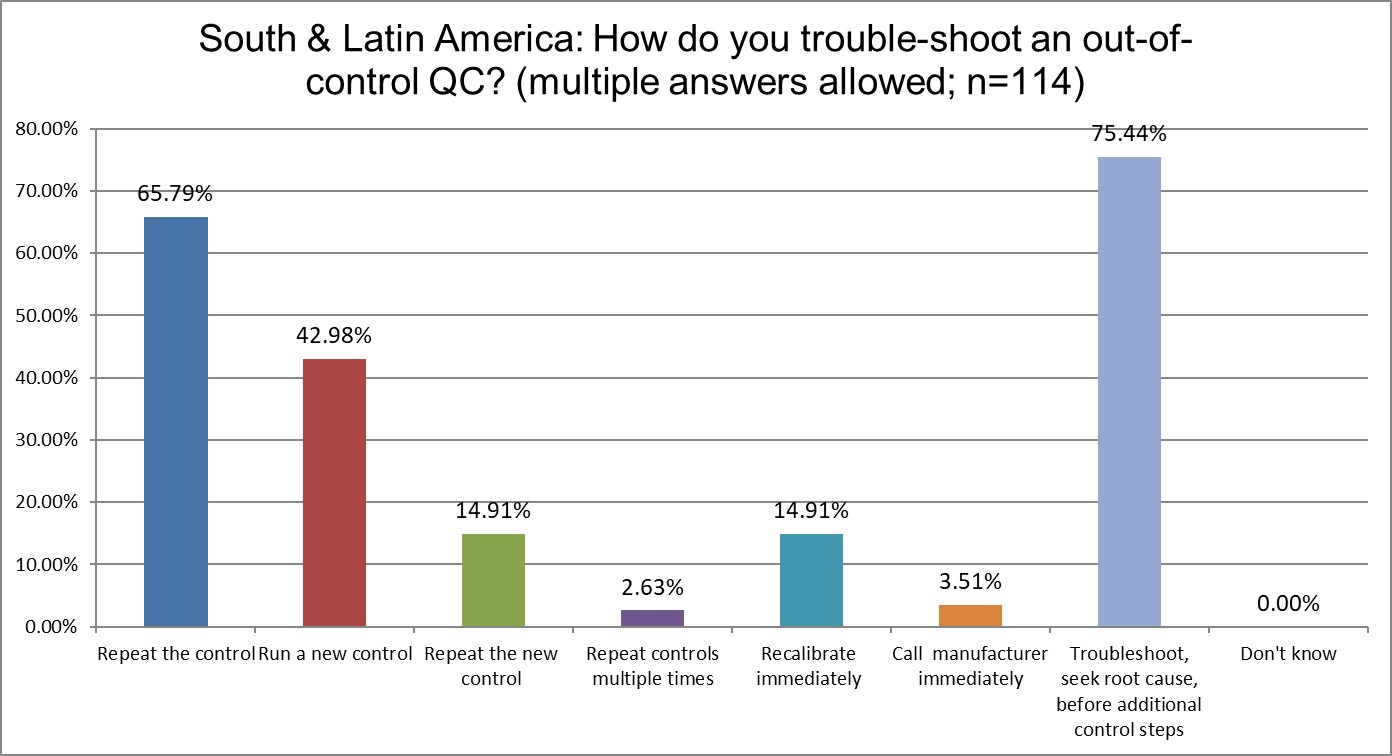
Latin and South America are definitely seeing an increase in control repeats. 57% of labs in 2021 repeated the control after an out-of-control even. Now that's nearly 66%. Running a new control has declined from 50% in 2021 down to just under 43% in 2025. But repeating the new control has inceased just slightly, from 11.5% in 2021 to 14.9% in 2025. Repeating more than that has declined from 7.7% in 2021 down to 2.6% in 2025. In 2021, 63.5% of labs stated they troubleshooted first, before repeating. That's increased to over 75% of labs in 2025. Latin and South America labs actually do more troubleshooting than Europe.
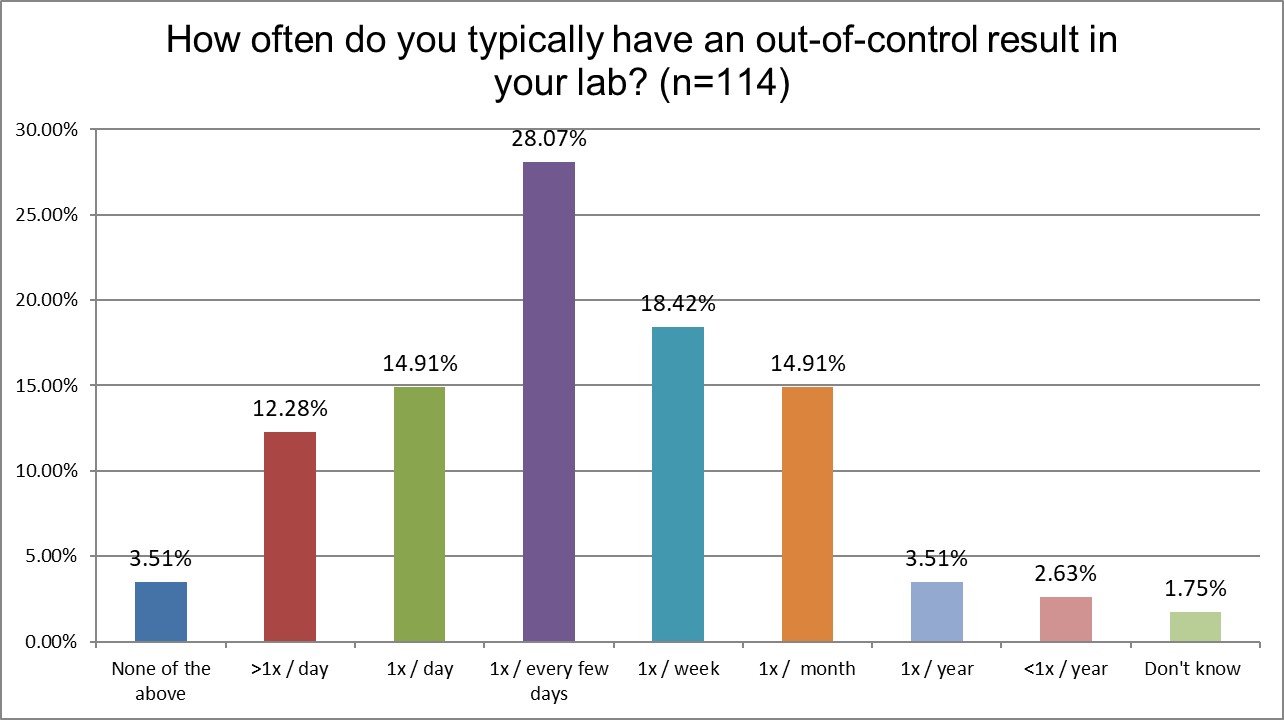
Latin and South American labs are just slightly more out of control in 2025 than they were in 2021. The % of labs reporting being out of control every day or multiple times per day was 25% in 2021, which is now just over 27% in 2025.
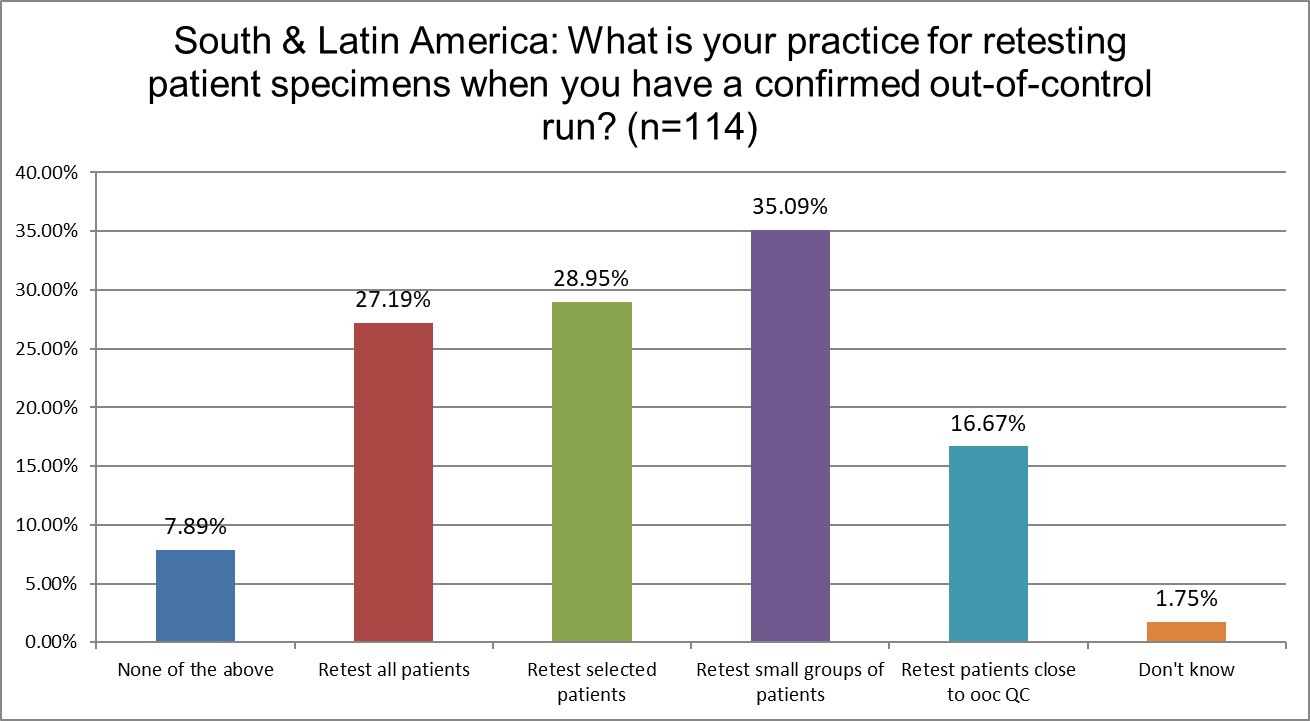
The percentage of Latin and South American labs that retest all patients after an out-of-control episode remains basically the same. It was 28% in 2021 and now it's 27% in 2025. Retesting select groups of patients is similarly the same in 2021 and 2025. Retesting small groups of patients rose from 21% in 2021 to 35% in 2025.
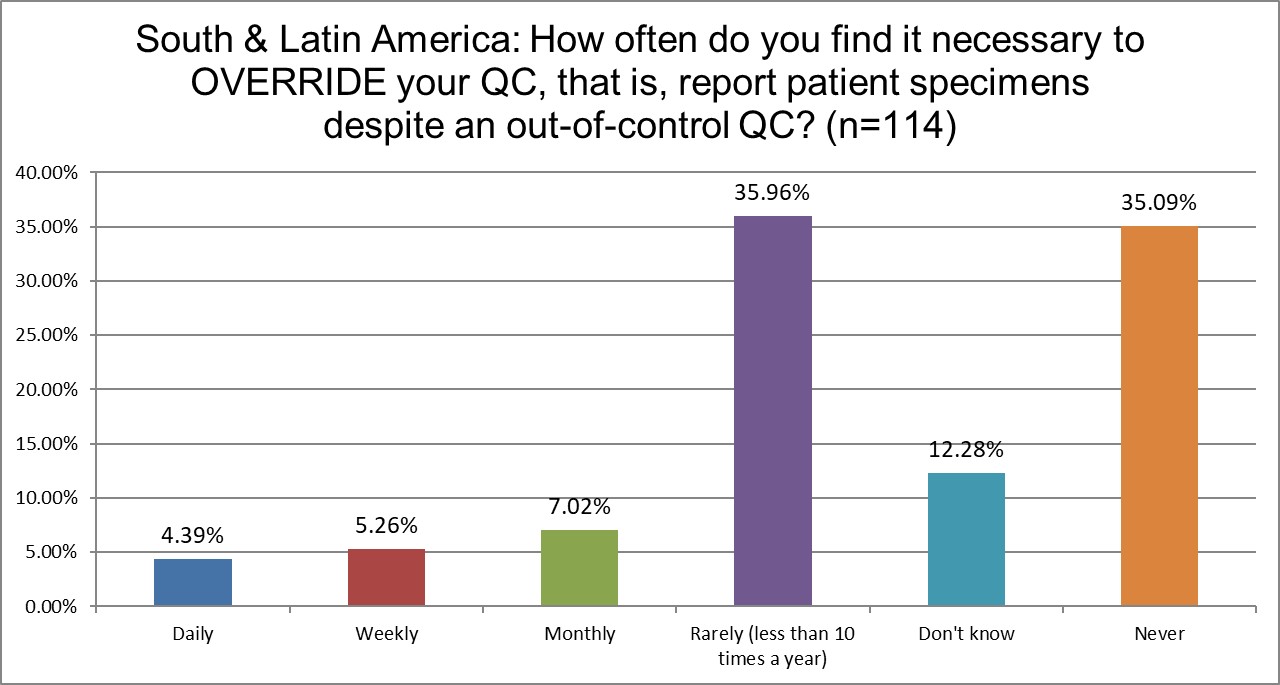
The good news is that the number of labs that send out test results even when there's an out of control run has declined significantly. In 2021, over 19% of labs said they did this on a regular basis (daily and weekly). In 2025, that's now just under 10%. The number of labs that say they never override their QC remains steady from 2021 to 2025.
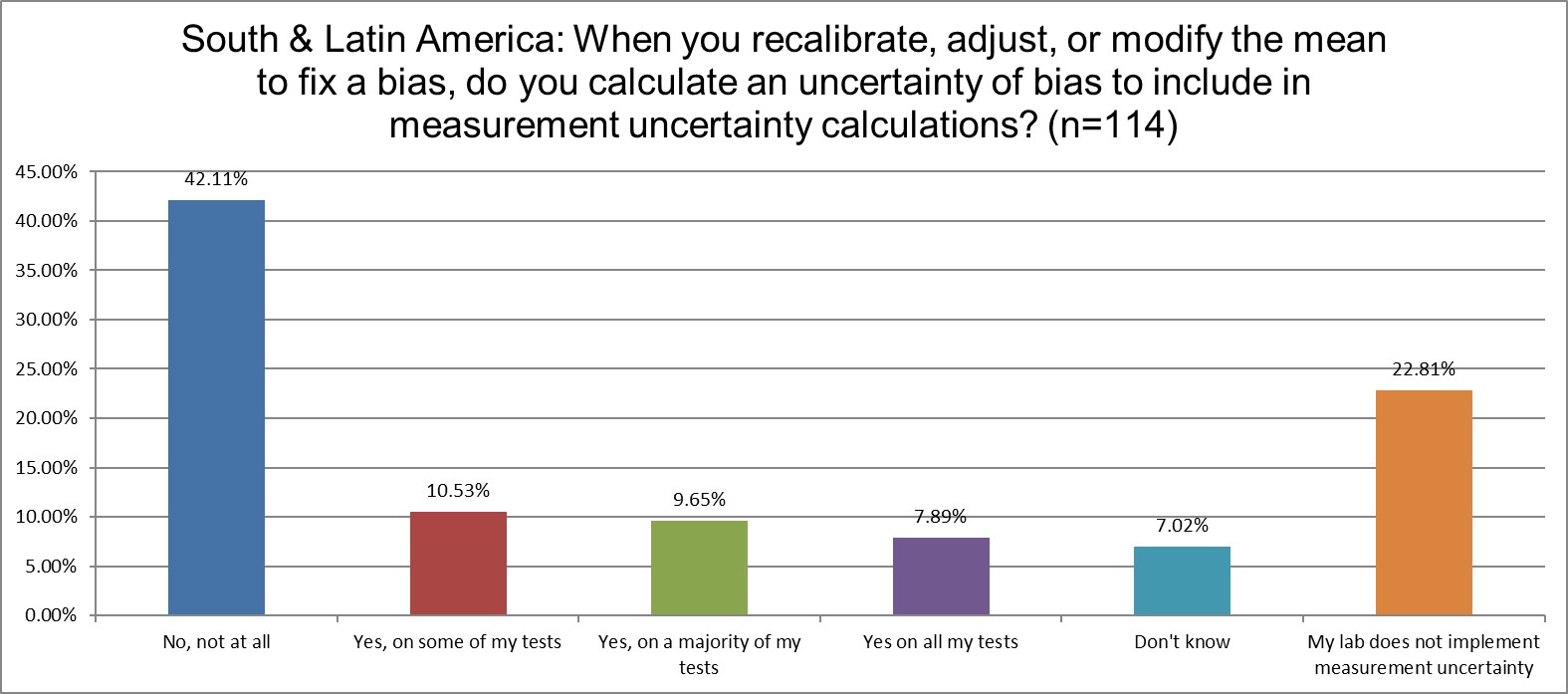
This question about bias uncertainty, or more correctly put, the measurement uncertainty around the correction of bias, is a new one to the 2025 survey. Over 22% of labs in Latin and South America state they they do not calculate mu, which is twice the rate seen in Europe.
The Final Overview
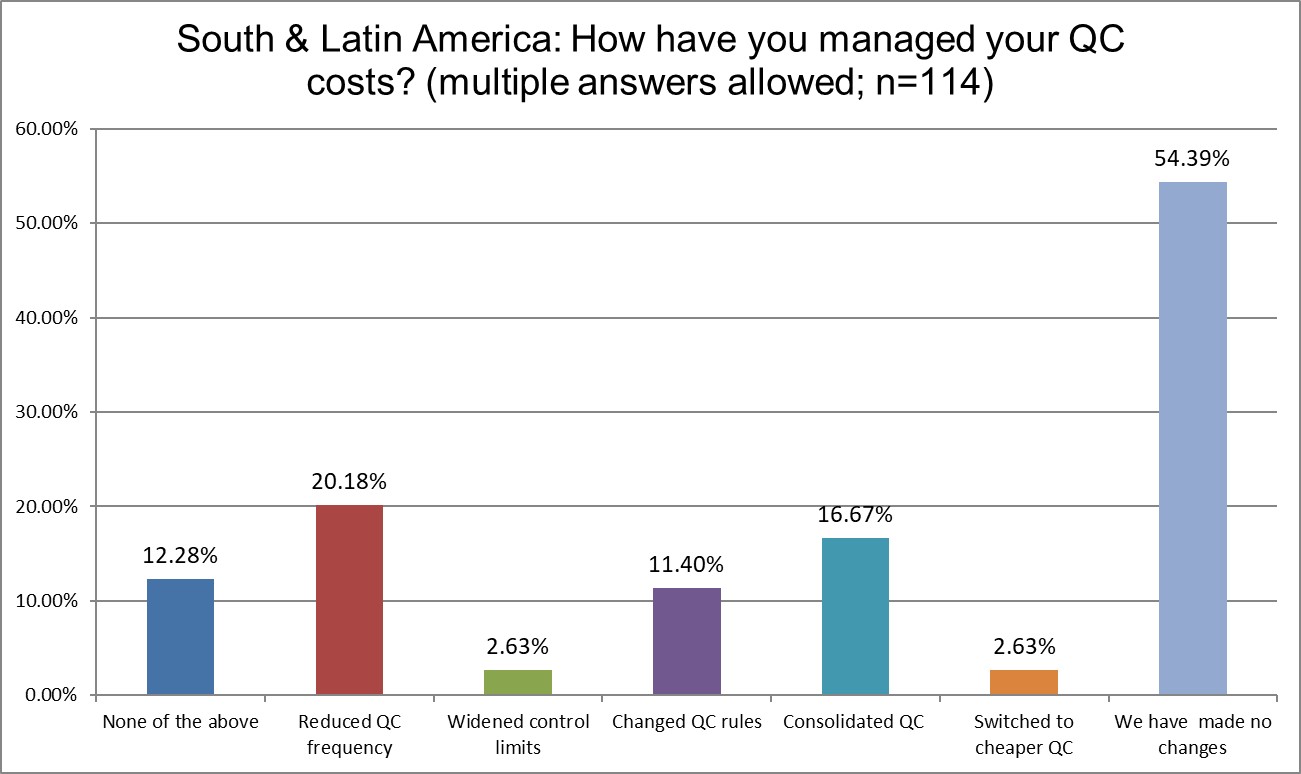
More labs have addressed their QC costs since 2021. In our previous survey, 62% of Latin and South American labs said they hadn't done anything. In 2025, it's now down to 54%, a significant decrease. In 2021, 20% were reducing QC frequency; that's remained unchanged at 19.6% in 2025. In 2021, about 11% widened their limits; now that's down to 2.6% in 2025, the largest change in actions. In 2021, 13.7% of labs changed their QC rules; that's basically unchanged at 11.4% in 2025. In 2021, about 9.8% consolidated their QC into fewer controls; now that's 16.67%, one of the few actions that increased.
In summary, almost half of Latin and South American have done nothing to change how they do QC and how much they spend on it. Practices here have not gotten as problematic as we've seen in other parts of the world, but little progress has been made.

